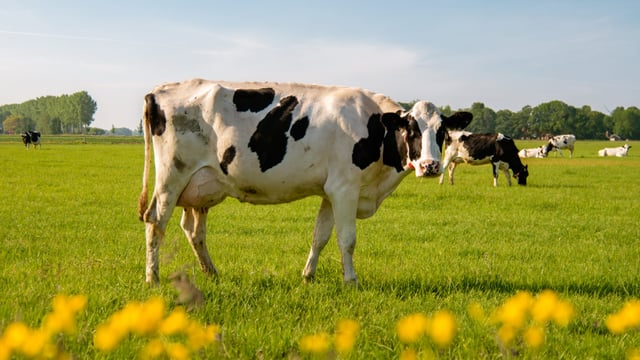Autumn calving: Importance of CMT with fresh calvers
Farmers who are currently in the thick of autumn calving must remember to carry out regular Californian milk testing (CMT) to identify mastitis at an early stage.
Mastitis is considered to be one of the most costly diseases in dairy, with an average cost of over €60/cow/year.
Mastitis is the inflammation of the mammary gland in cows, caused by bacteria which enters the teat canal and moves up to the udder where it multiplies and causes an infection.
There are two main types of mastitis, contagious mastitis (Staph. aureus and Strep. agalactiae) and environmental mastitis (Strep. uberis and E. coli).
The majority of mastitis cases on Irish dairy farms are seen before calving or within the first few weeks, as the cow's immune system is low and environmental conditions are poorer, given our climate.
As the cow’s immune system fights the infection, somatic cell count (SCC) will rise, and only then farmers may notice mastitis.
However, by using the CMT regularly, farmers can catch the infection early before it turns clinical, or identify silent mastitis cases.
CMT
High SCC can often be caused by stress rather than an actual infection, which is why most farms see a spike in SCC during calving with cows returning to normal levels after three-to-four days.
Vigilance during this time is important as a spike in SCC which is caused by infection can spread easily from cluster to cluster, creating big problems in the herd.
With milk recording becoming somewhat of a normal routine on many dairy farms across Ireland, the use of CMT has dropped.
However, they still hold an extremely valuable position in dairy farms, picking up any early mastitis spreading in cows calved before or after milk recordings take place.
Testing
Ideally you should be grouping freshly calved cows together until SCC has returned to normal and the cow has stopped producing beestings and transition milk.
Four days to a week after calving, these cows will require a CMT before being eligible to join the main milking herd.
If the paddle test is normal, the cows can go to the main milking herd and their milk can go to the bulk tank in the next milking.
However, if the paddle is still a bit gooey on all four quarters, the cow is most likely still just displaying post-calving stress and should be held back from the herd.
Cows that are displaying an issue in one or two quarters may be indicating mastitis, and they should be held back and closely monitored as they may require treatment.





